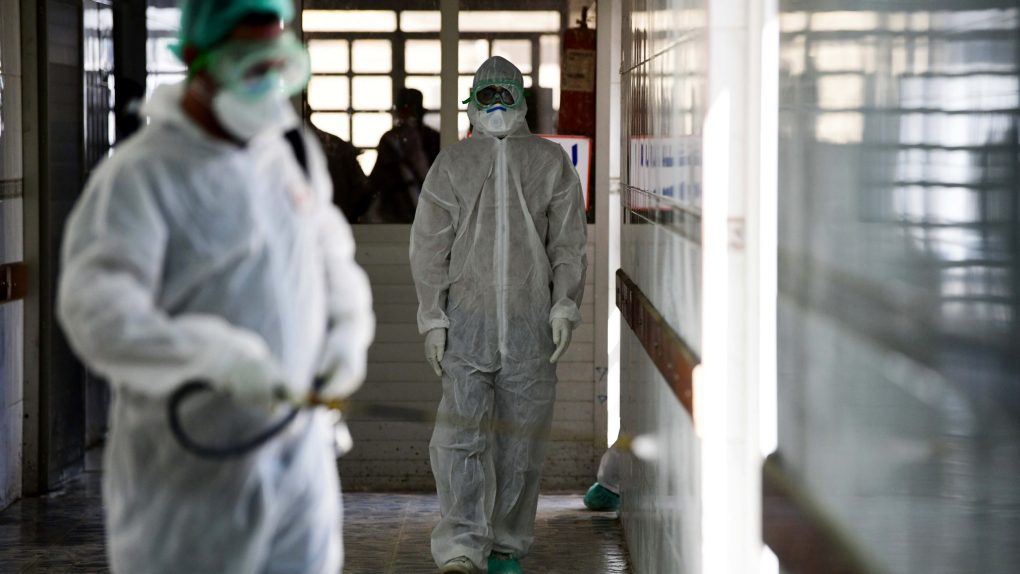- Doctors treating coronavirus patients have been trying to figure out the immune system’s “cytokine storm” that can kill COVID-19 patients.
- These “storms” can occur suddenly, even in patients who are recovering from the disease and people who don’t have other underlying conditions.
- Doctors have been using drugs to lower the immune response and avoid these “cytokine storms” with some success, although more studies are required.
- Visit BGR’s homepage for more stories.
The coronavirus nightmare is far from over, and we may be looking at a seasonal illness that keeps coming back. The first COVID-19 vaccines will be available next year at the soonest, and plenty of people will still die before then. As of Wednesday morning, there were more than 1,414,000 COVID-19 cases, including more than 83,000 deaths. The US alone accounts for nearly 400,000 COVID-19 patients and almost 13,000 deaths. The curve is yet to be flattened in many countries dealing with the epidemic, but with each day that goes by, scientists are figuring out new things about the illness. Like the fact that COVID-19 can develop neurological or cardiac symptoms. Or that the virus can be killed with ease by an anti-parasitic drug in lab conditions.
While a cure isn’t available and we need to wait even more time for the World Health Organization’s COVID-19 drug mega trial to run its course, doctors have started figuring out why some people die. And it’s not just the elderly and those patients who have other underlying medical conditions who are at risk. It’s unexpected deaths in patients who seem to be recovering, only for the disease to take a sudden turn for the worst that can result in death. It’s apparently a “cytokine storm” at play, and doctors still don’t understand exactly why it happens.
The immune system fights the pathogen from the moment it enters the body, and many COVID-19 patients will never even show symptoms, or they might experience a mild case. All of these patients could still spread the disease, but they don’t risk experiencing any respiratory complications. Once the immune system wins, those patients will have acquired immunity to the novel coronavirus, which may be long-lasting provided the virus doesn’t mutate very much.
Then some patients seem to recover after exhibiting fever and aches, only to worsen without notice. It turns out it’s still the immune system at fault because it goes into overdrive and ends up attacking the entire body.
“We’ve seen some patients rapidly worsen,” University of Washington assistant professor Dr. Pavan Bhatraju told NPR. “They initially were just requiring a little bit of oxygen. In 24 hours, they’re on a ventilator.”
The doctor and his peers penned a study about the rapid deterioration of lungs in coronavirus cases. Apparently, the crash happens seven days after infection and nobody is safe. Even young patients who don’t have other comorbidities can be effected. Doctors believed that it’s a so-called “cytokine storm” that causes the negative evolution of COVID-19 in some patients. These cytokine molecules are supposed to coordinate the battle against infections, and they alert immune cells to attack the virus (see the video below for a more detailed explanation).
Benaroya Research Institute in Seattle immunologist Jessica Hamerman likened them to a faulty smoke alarm. “Think about it like when the smoke alarm never goes off — you’re going to keep calling the firefighters over and over again, and you’re going to have too many there,” she said. In this case, the firefighters are the immune cells fighting the coronavirus, which can then attack healthy tissue.
Cytokine storms aren’t unique to COVID-19, so doctors already know how to treat them. At least in theory. The immune response has to be lowered in patients with poor prognostics. But COVID-19 is a brand new disease, and there are no known protocols for it. On the one hand, you want the immune system to fight the virus. On the other hand, you don’t want the immune system to go into overdrive.
Scientists haven’t figured out all the answers, and they’re just testing theories. One idea is that the virus keeps replicating despite the immune response. But it turns out there are cases where the immune system keeps reacting to the infection even after the virus has been killed.
Doctors have already tried to fight the cytokine storm with drugs like interleukin-6 inhibitors, or IL-6 inhibitors. These block a cytokine associated with inflammation. In one case, a woman who was close to being put on a ventilator regained the ability to breathe on her own. Dr. Daniel Griffin told NPR he’s treating patients with IL-6 inhibitors and steroids, and he sees promising results. However, this is still a trial and more testing is required.
“It looks like if they get the interleukin-6 [drug] right as this cytokine storm is ramping up, the impact was dramatic,” he said. “Now I’m going to watch over the next few days. Is it durable? Will these people continue to do well?”
One of the companies making IL-6 inhibitors is conducting trials in the US and Europe. “We expect we may be able to share initial results of the Phase 2 portion of the US trial by the end of April,” Regeneron spokesperson Sarah Cornhill told NPR. Roche is in Phase 3 trials.
If any of these treatments are successful at blocking the immune system when it becomes a danger to the patient, the rate of COVID-19 deaths could start to drop in the coming months.








